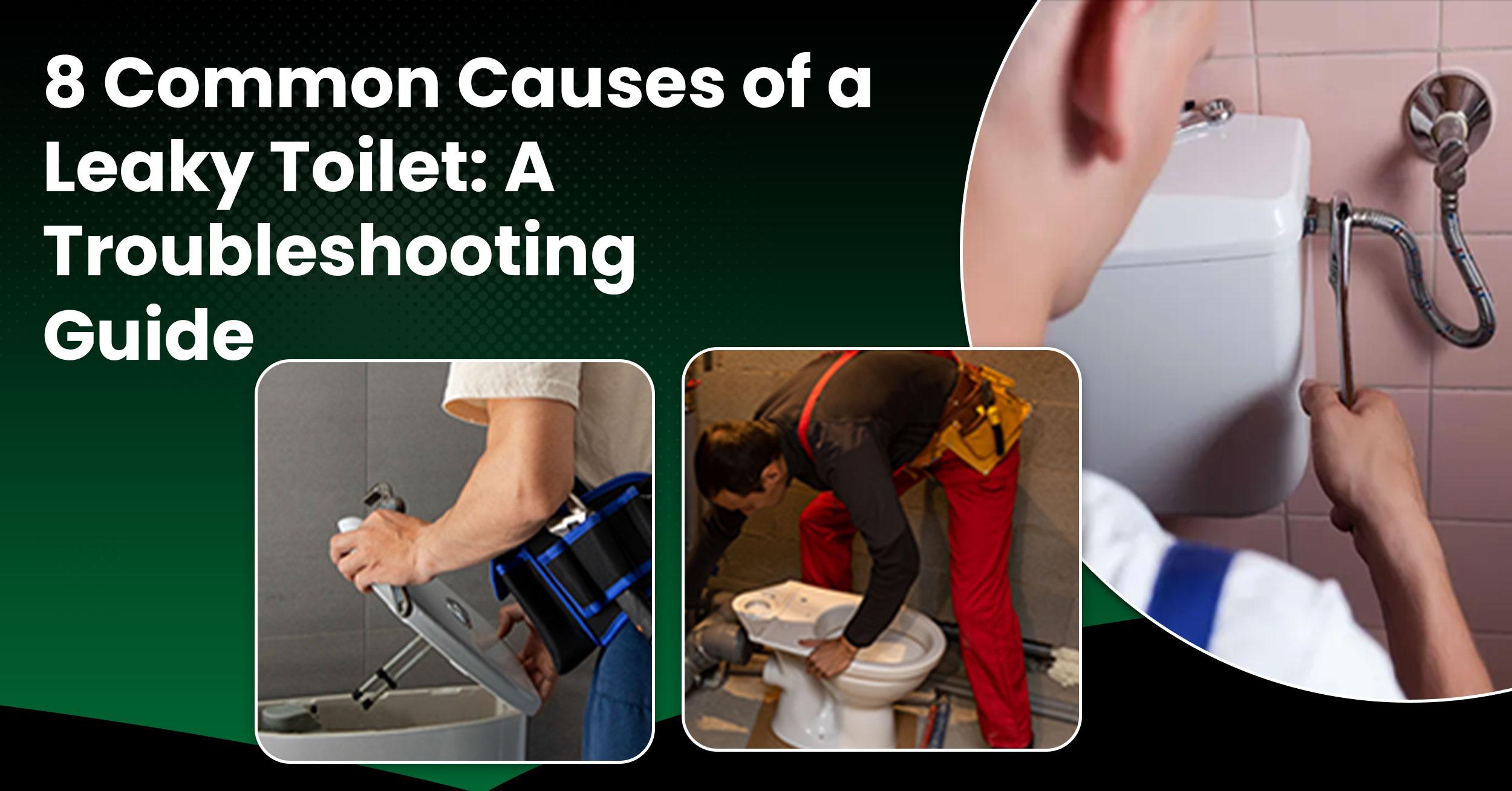8 Common Causes of a Leaky Toilet: A Troubleshooting Guide

A leaky toilet can be a persistent annoyance, leading to wasted water and potentially causing damage to your bathroom floor and fixtures. Among the various types of toilet leaks, one of the most common and troublesome is when water seeps out at the base of the toilet. This issue demands immediate attention to prevent further damage and inconvenience. In this blog, we'll explore eight common causes of toilet leaking at the base and offer solutions to fix them.
1. Faulty Wax Ring:
The wax ring seals the connection between the toilet and the waste pipe. If this ring becomes damaged or dislodged, water can seep out onto the floor from the toilet base. Replacing the wax ring involves removing the toilet, scraping off the old wax, and installing a new ring.
2. Loose Bolts:
The bolts securing the toilet to the floor can loosen over time, causing leaks around the base. Tighten these bolts carefully to ensure a snug fit between the toilet and the floor.
3. Cracked Tank or Bowl:
Cracks in the porcelain of the tank or bowl can lead to leaks. Inspect these components regularly for any signs of damage. If you notice cracks, it's best to replace the affected part to prevent further leakage.
4. Worn Out Flapper Valve:
The flapper valve controls the flow of water from the tank to the bowl during flushing. If the flapper is worn out or damaged, water can continuously leak into the bowl, causing the toilet to run constantly. Replace the flapper to resolve this issue.
5. Overfilled Tank:
If the water level in the tank is set too high, water may overflow into the overflow tube and leak onto the floor. Adjust the float arm or float cup to lower the water level in the tank to the recommended level.
6. Faulty Fill Valve:
The fill valve regulates the water level in the tank after flushing. If the fill valve is defective or worn out, it may fail to shut off properly, leading to continuous water flow into the tank and eventual leakage. Replace the fill valve to fix the problem.
7. Corroded Supply Line:
The supply line connects the toilet to the water supply. Over time, this line can corrode or develop leaks due to wear and tear. Inspect the supply line regularly and replace it if you notice any signs of corrosion or leakage.
8. Condensation:
In humid environments, condensation can form on the outside of the toilet tank and bowl, giving the appearance of a leak. To prevent this, consider insulating the tank or using a dehumidifier in the bathroom.
The Bottom Line
A leaky toilet can waste water, damage your bathroom, and increase your water bill. By identifying and addressing the common causes of leaks, you can keep your toilet in good working condition and avoid unnecessary expenses. Regular maintenance and prompt repairs are key to preventing leaks and ensuring the efficient operation of your toilet.

